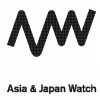New updated equipment that is scheduled to go into operation at the Fukushima No. 1 nuclear power plant in December will detect radioactive strontium 90 in contaminated water in less than 30 minutes, compared to the seven to 10 days it now takes.
New updated equipment that is scheduled to go into operation at the Fukushima No. 1 nuclear power plant in December will detect radioactive strontium 90 in contaminated water in less than 30 minutes, compared to the seven to 10 days it now takes.
The advanced detection equipment was developed as part of a group effort centered on the work of Yoshitaka Takagai, an associate professor of analytical chemistry in the Faculty of Symbiotic Systems Science at Fukushima University. Researchers from PerkinElmer Japan Co., based in Yokohama, were also involved in the research.
University officials discussed the plan to deploy one of the new devices Nov. 27.
"We want to reduce the burden on the small number of people working at the plant site,” said Takagai. “We also hope that improved efficiency in analysis will, in the long run, lead to a shortening of the time it takes to decommission the reactors."
The improved technology involved making changes to an analytical device so that it automatically separates strontium 90 in order to analyze it in a shorter period of time.
Tokyo Electric Power Co., the operator of the Fukushima No. 1 plant that was damaged by the 2011 Great East Japan Earthquake and tsunami, will use the equipment to test rainwater that has accumulated within containment barriers set up around tanks that store radioactive contaminated water.
The university first announced the completion of the new equipment in September 2013. Further improvements were made after consulting with officials from the plant with an eye toward actual operations. As a result, the accuracy of the analysis has improved tenfold from the first version.
The equipment is now also capable of measuring even lower concentrations of strontium. The minimum level it can detect is 0.3 becquerels per liter. That analysis can be completed in as little as 23 minutes.
Two more of the devices are scheduled for installation in the next fiscal year. The new equipment is designed to screen fresh water, but further efforts will be made to develop the technology so it can also analyze seawater.

